Ferrari thinks big with its flagship FF
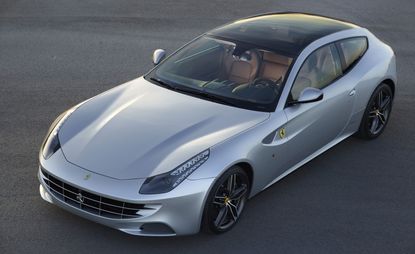
The wildcard in the current Ferrari range, the four-seater, four-wheel-drive FF was launched with great fanfare back in 2011. It was billed as something decidedly different from the usual Maranello fare, with the first models shown barrelling along a snowy mountainside as if to cement their image as a go-anywhere wondercar. Now that the Ferrari range has expanded to include svelte coupes like the California T (see W*187), hardcore track cars and billionaire collectables, is the FF still a flagship or just a curious sideline?
Four-seater Ferraris are nothing new. But the FF's immediately predecessor, the Scaglietti, came under fire for not conforming to the brand's rigorous aesthetic standards in its quest to squeeze four full-sized adults behind a large V12 engine. We loved the Scaglietti – and even specified an example of our own – but the criticism must have stung, because Ferrari went back to Pininfarina with a very different brief.
The FF is, broadly speaking, a shooting brake. The 'two-box' body means there's plenty of space for passengers and luggage, while another innovation, four-wheel drive, lurks under the body shell. The FF still hasn't received universal acclaim for its appearance, but in our view it looks fantastic. Sure, it's enormous, a wince-inducing bulk that initially makes life tense for the regular urban driver. There's no hiding in plain sight either, for the 630bhp V12 wants to let everyone know you've arrived, and heads turn at the slightest blip of the throttle.
The aesthetics stumble slightly inside, although there's no denying the cabin is spacious (especially with the vast panoramic glass roof) and comfortable. While other manufacturers are stuffing in steering wheels with buttons that replicate things like radio and navigation function, Ferrari insists on only placing driver-focused controls on what it dubs the manettino. After a while it makes sense to dip the lights and even flick on the indicators using these switches, but the vehicle dynamics selector is a naked nod to Ferrari's F1 heritage and feels out of place in a GT, rather than a pure sporting machine.
The FF is by no means slow. Very few cars top out at 208mph and the sub 4 second sprint to 60 is right up there at the front of the pack (the company maintains it's the world's fastest four-seater). If you're constantly ferrying yourself over the Italian Alps and taking in a few miles on well-maintained autostrada, there can be few finer vehicles for the trip. The Ferrari FF is a symphony of noises, some of which are unexpected, like the unnerving popping and crackling of cooling mechanical bits that accompanies the end of any journey. That engine note, too, is fast approaching some kind of cultural watershed; there'll always be those that love the sound of a V12 at full bore. The problem for companies like Ferrari is that plenty of people don't, and that number can only be increasing.
So what will happen to this covetable niche of six-figure sports cars? In recent years, Ferrari has pushed its bespoke business into ever-more unpredictable niches. One-off cars for rock stars and industrialists have been followed by the LaFerrari hypercar and the recently announced Pininfarina Sergio, a limited edition of six. The FF is still a volume machine in comparison but it remains a breed apart from the rest of the current range, in style, ethos and practicality. Too big to be a true sports car, the FF is an unparalleled piece of automotive eccentricity.

The aesthetics stumble slightly inside, although there's no denying the cabin is spacious (especially with the vast panoramic glass roof) and comfortable
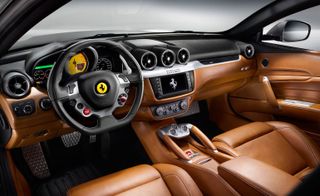
While other manufacturers are stuffing in steering wheels with buttons that replicate things like radio and navigation function, Ferrari insists on only placing driver-focused controls on what it dubs the manettino
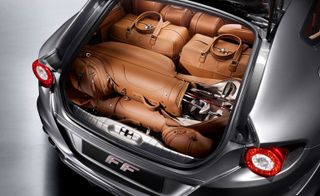
The 'two-box' body means there's plenty of space for passengers and luggage...

...while another innovation, four-wheel drive, lurks under the body shell
Wallpaper* Newsletter
Receive our daily digest of inspiration, escapism and design stories from around the world direct to your inbox
Jonathan Bell has written for Wallpaper* magazine since 1999, covering everything from architecture and transport design to books, tech and graphic design. He is now the magazine’s Transport and Technology Editor. Jonathan has written and edited 15 books, including Concept Car Design, 21st Century House, and The New Modern House. He is also the host of Wallpaper’s first podcast.
-
 A new book offers a cinematic view on Molteni & C
A new book offers a cinematic view on Molteni & C‘Molteni Mondo. An Italian Design Story’ published by Rizzoli celebrates 90 years of the Italian furniture company Molteni & C
By Rosa Bertoli Published
-
 Ikea introduces its first gaming furniture collection
Ikea introduces its first gaming furniture collectionBrännboll is the first Ikea gaming furniture collection, unveiled during Milan Design Week 2024 and designed to swiftly transform a domestic space into a gamer’s paradise
By Jasper Spires Published
-
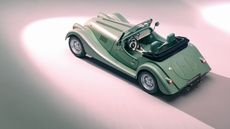 Morgan take their classic roadster and give it subtle but significant tweaks for 2024
Morgan take their classic roadster and give it subtle but significant tweaks for 2024New details and features give the compulsive Morgan Plus Four an even more pared back silhouette and driving ability
By Jonathan Bell Published
-
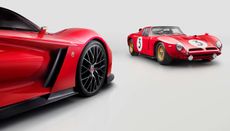 Restomod Italian cars: Lancia, Alfa Romeo, Fiat and more classics reborn for modern roads
Restomod Italian cars: Lancia, Alfa Romeo, Fiat and more classics reborn for modern roadsIn the world of restomod Italian cars, everything from 1960s race cars to cult city vehicles can be restored, reshaped and updated for modern driving and fastidious collectors
By Jonathan Bell Published
-
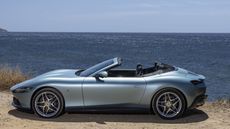 Year in review: the top 10 cars of 2023, as selected by Wallpaper’s Jonathan Bell
Year in review: the top 10 cars of 2023, as selected by Wallpaper’s Jonathan BellWhat were the best four-wheeled offerings of 2023? Transport editor Jonathan Bell takes us through the year’s most intriguing automobiles
By Jonathan Bell Published
-
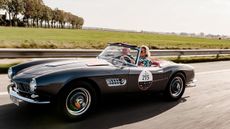 Zoute Grand Prix is a car fest like no other at a pristine Belgian beachside town
Zoute Grand Prix is a car fest like no other at a pristine Belgian beachside townAmy Serafin takes to the well-heeled streets of Knokke-Heist to experience the Zoute Grand Prix, its annual cavalcade of classic car-related events, from a rally to an auction
By Amy Serafin Published
-
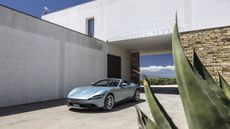 Ferrari Roma Spider is a tonic for the senses
Ferrari Roma Spider is a tonic for the sensesThe new Ferrari Roma Spider is a throwback to the glory days of open-topped motoring and a sublime drive, as Jonathan Bell discovered
By Jonathan Bell Published
-
 The Little Car Company’s garage of pocket exotics are small, speedy and beautiful
The Little Car Company’s garage of pocket exotics are small, speedy and beautifulThe Little Car Company specialises in bespoke ‘junior classics’, exacting, scaled-down reinterpretations of iconic (and expensive) automobiles injected with electric driving delight
By Jonathan Bell Published
-
 Aston Martin DB12 is the latest and greatest in a 75-year lineage of sporting GTs
Aston Martin DB12 is the latest and greatest in a 75-year lineage of sporting GTsBilled as the brand’s first ‘Super Tourer’, the V8-powered Aston Martin DB12 marks a new high point in marque’s signature mix of beauty, brawn and sophistication
By Jonathan Bell Published
-
 Ferrari takes the top off its glamorous Roma to create its newest Spider
Ferrari takes the top off its glamorous Roma to create its newest SpiderThe Ferrari Roma Spider is designed to embody La Dolce Vita in automotive form, a ‘2+’ soft-topped sports car for roaming around the Riviera
By Jonathan Bell Published
-
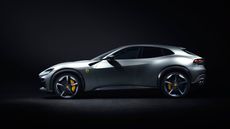 Flavio Manzoni gives Wallpaper* an exclusive insight into the new Ferrari Purosangue
Flavio Manzoni gives Wallpaper* an exclusive insight into the new Ferrari PurosangueThe Ferrari Purosangue marks a radical departure for the Italian sports car brand, bringing four doors and everyday practicality to the fabled badge for the first time. Ferrari's chief design officer Flavio Manzoni describes the design approach
By Jonathan Bell Published